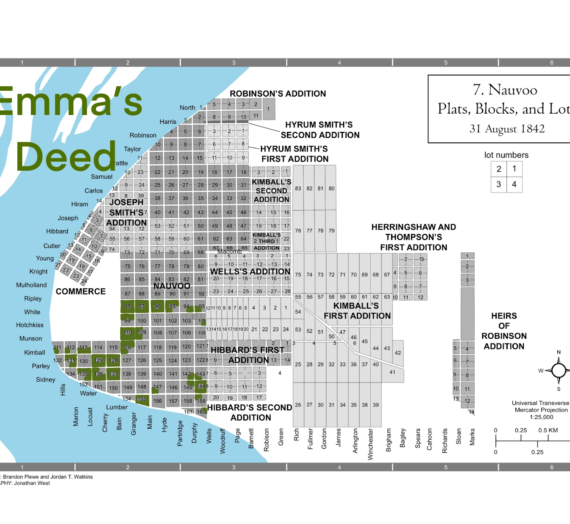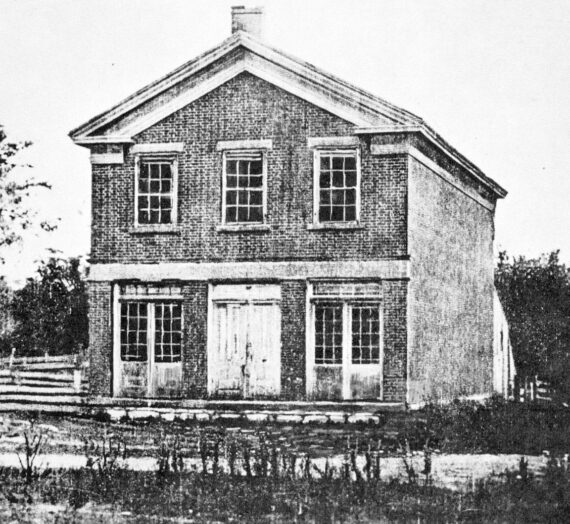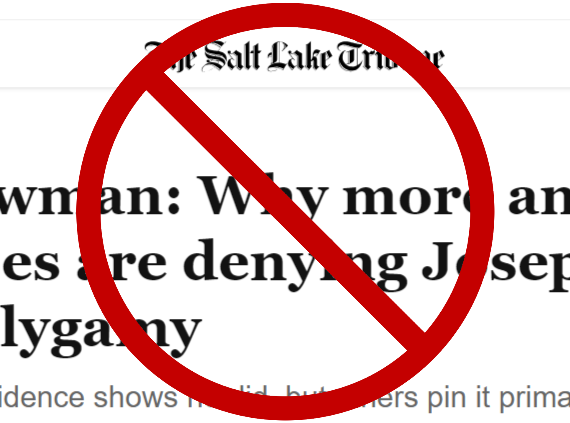In today’s episode (6/23/24 – #124) I mentioned the poor Scottish family who sent their two oldest children to “Zion” where the teenage daughter was promptly married off as a polygamist wife to an older man. What I failed to remember (again!) is that this story is about my own family!
I first learned about this story while investigating the claim that William Law’s son saw Joseph and William weeping together over polygamy. I talk about it in episode 87, starting around 1:40:00. The girl’s name was Jeanette Irvine. (Pictured here as an older woman)

When she was only 15, her impoverished parents sent her and her younger brother, John (the oldest two of their eight children) to “the valley” on the perpetual emigration fund. Within two months of arriving, she was married to the 48 year old Joseph McMurrin jr.

Margaret, Joseph’s first wife and mother of their 9 children, learned less than two days before the marriage that a 15 year old girl – the same age as her sixth daughter – would be moving into her home as her husband’s wife.


I’ll get back to this story, but first, I need to remind you of my post-post manifesto polygamist grandparents, Athelia Viola Call and William Gayley Sears. They were married February 21, 1906, two years after the second manifesto. William had married Agnes McMurrin several years earlier, but by this time it became apparent that they would be unable to have children. However, William had had a dream that he had many children and went to see Joseph F. Smith, the President of the church, about it. Joseph F. Smith called William to go to Mexico and take a second wife. William expressed surprise because they “weren’t doing that anymore.” But President Smith said, “I am not calling you as the President of the Church. I am calling you as the President of the Priesthood.”

William and Agnes moved to Mexico the same month the second manifesto was issued, and met Athelia, the bishop’s 16 year old daughter, (shown below on the day they met, when she was chosen as “Queen of the May”)

They waited two years, until she turned 18, to finally marry. (While there is, of course, no written record of this from Joseph F. Smith, the story is backed up by the fact that despite marrying his second wife in 1906, William was not only not disciplined, but was clearly protected. He went on to work at church headquarters and serve in many high callings, and Harold B. Lee presided and spoke at his funeral.)
While William had many pictures taken of him alone, and posed together with Agnes for many pictures throughout their lives,




he never had a picture taken with Athelia. The closest we get is this casual photo snapped at a family gathering where they happened to be the only two in the shot.

In every family picture, Athelia, the mother of all of the children, stands in the back, while the first wife, Agnes, sits next to William.


Athelia would go on to have nine children, and outlive both William and Agnes by 25 years. In some ways Athelia’s story is a bit similar to Hagar in the Old Testament. She was taken as a wife because the first wife could not bear children. Her first baby (my grandmother) was named Agnes, after the first wife. As soon as baby Agnes was old enough to be weaned, William and Agnes brought her from Mexico to Utah to introduce their new baby to all of their family and friends. Athelia, the baby’s mother, was left behind in Mexico. I cannot even imagine what this young new mother must have felt, but it seems to have been ongoing pain. Her children were never allowed to be considered “hers” – they were always “theirs.” If they ever wanted to give their mother a card or gift for mother’s day, they needed to also make one for Aunt Aggie, and deliver it to her first. My grandmother once quietly told of hearing her mother rocking her babies in the night crying and quietly repeating, “mine, mine.” When William was called (again) to serve as mission president, Athelia was left home to raise the children with no support while William and Agnes went together to serve his calling. My grandmother, the oldest daughter, did not marry until she was 26, in large part because she needed to work to provide for her mother and younger siblings.

The absolutely incredible thing that I learned about these two stories, both of which I have covered in the podcast, is how they are connected in my own family history. I could barely believe it when my mom reminded me that Aunt Aggie’s maiden name was McMurrin, and I looked her up and learned that Jeanette Irvine McMurrin, the 15 year old Scottish girl married off to the 48 year old father of 9, was Aunt Aggie’s mother! Agnes McMurrin Sears, the first wife of my great-grandfather Sears, and namesake of my grandmother, was the daughter of the girl whose story I had looked up and shared in that episode!

Agnes Jeanette
I knew I had polygamy on every side in every line, but I did not know until recently that I also had a personal claim on the heartbreaking story of Jeanette Irvine McMurrin, through her daughter, Agnes.
I confess that my feelings about all of this are extremely complicated. My entire LDS heritage is steeped in polygamy. Two generations of my ancestors believed deeply in “the principle.” I know that several of my relatives alive today are not happy with what I am doing. They believe that honoring our ancestors requires us to believe that polygamy was a commandment of God. I strongly disagree. I believe we honor our ancestors by appreciating and recognizing their goodness and their sacrifices, and by doing our best to correct rather than perpetuate their errors.
Historians who have studied my family say they lived polygamy about as well as it was possible to live it. They fully experienced the hardships – grinding poverty, absent husbands and fathers, unbearably painful deprivation and lack of oneness in marriage, and so much more. Yet, through all of that struggle came some incredible people. My mother and everybody else who remembers Grandma Sears (Athelia) cannot say enough good about her.

She is universally remembered as a woman with a heart made out of pure gold. I never knew her, but I have always felt deep love for her. I have often wondered how she would feel about my opposition to polygamy. While she, like most other polygamist women, was raised to believe in the principle, pain seeps through the lines of her short autobiography, and I can’t help but wonder if somewhere deep down, she knew something was just not right. I know from profound experience that her grandmother, Mariah Bowen, opposed polygamy with her entire soul, and is deeply invested in wanting all women to know what she knew. But I haven’t had those same experiences with Athelia, so I can only pray that she too is happy with my efforts. I believe she is.
To make this entire story even more incredible, just a few years after William and Agnes (her husband and sister-wife) both died, Athelia was remarried to a man named Thomas Irvine – who just happened to be the cousin of Agnes, the first wife!
Jeanette Irvine, the 15 year old Scottish girl at the beginning of this story, came to America with her younger brother, John. Thomas Irvine, the man Athelia married after Will’s death, was John’s youngest child.

Athelia and Tom lived together in a genuinely happy monogamist marriage for over 20 years, until Athelia was tragically struck by a car and killed at age 80. After so many years of painful struggle in polygamy, I am so happy that she was able to experience the joy, peace, fulfillment, and satisfaction of having her own husband. She and Tom found great joy in one another’s company and serving together in their many church callings. The last line of Athelia’s autobiography says, “Tom is kind, considerate and understanding of my every need, and I truly feel that the Lord had a hand in bringing us together.”


